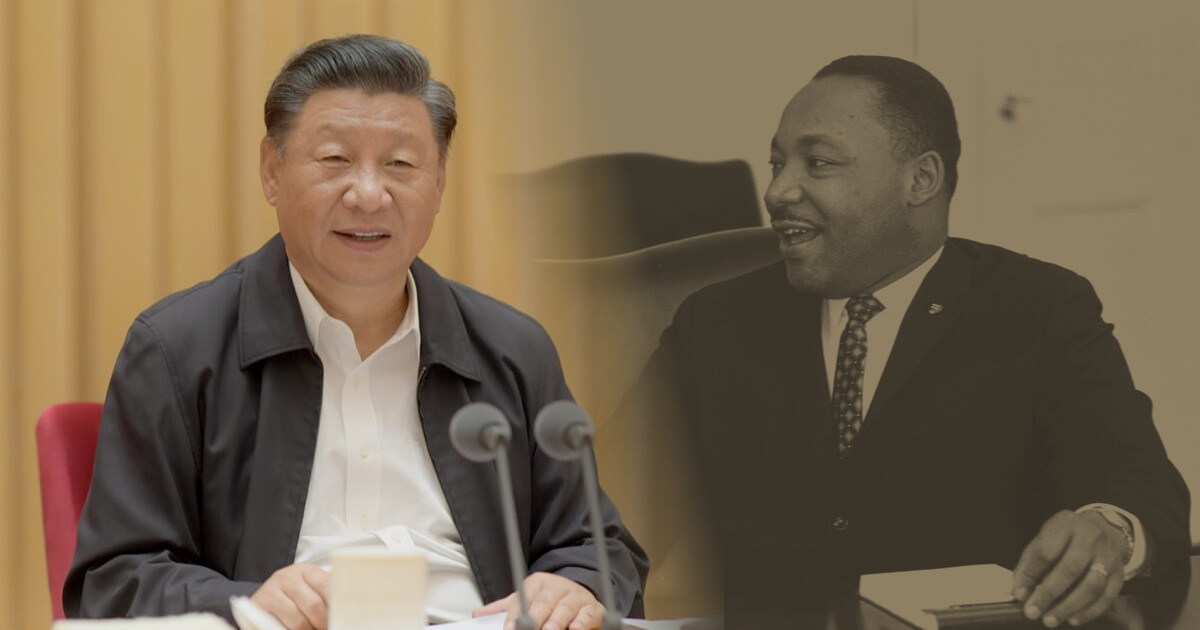In any attempt to understand contemporary culture and its artistic manifestations in a materialist manner it is absolutely essential that we attempt to do so in the light of a Marxist critique. There is not, however, only one “official” Marxist approach to the understanding of art. Past attempts to force creative thought into a narrow official mould by means of state sponsored interpretations of Marxism resulted in a separation between genuine materialist theory and the social reality that was being presented. My purpose is not to present the “correct” theory of a materialist philosophy of art but to attempt to lay down what I think to be the four basic features that anyone trying to work out a Marxist aesthetic must keep in mind. These four features will also be useful to those who propose to write materialist criticism of both contemporary “pop culture” as well as so called “high culture.”
First, it is well known that neither Marx nor Engels consciously worked out a philosophy of art as part of their general worldview. Nevertheless, they made particular judgments on art and their overall positions on historical materialism (in conjunction with these judgments) have been appealed to by their followers in order to support aesthetic theories that were developed later within the context of the Marxist movement.
Second, based on the general notions of historical materialism, the social context of art takes on the most important aspect in any Marxist aesthetics. That is to say, approaching art in a materialist spirit, a Marxist philosophy of art bases itself on the social, cultural, and biological factors of human life as the foundation upon which art arises. This, of course, does not distinguish a Marxist approach from a materialist approach in general. This further determination can be made when we consider the following.
Third, the notion of contradiction in the dialectical logic inspired by Hegel, as developed by Marx and Engels, and its relation to struggle and the overcoming of such at higher developmental levels are necessarily linked to the basic materialist approach fundamental to a Marxist aesthetic. In this we find the main difference between traditional philosophical materialism and Marxist historical materialism. Traditional materialism, while recognizing the primacy of matter, tended to interpret the world in unchanging mechanical categories. The materialist philosophers of the French Enlightenment, while disposing of religious, spiritual and mystical explanations for the events of the natural world, had no real theory of historical or natural change and development.

Expanse by Aleksandr Deyneka
The materialist philosophy developed by Marx and Engels, on the other hand, by adapting the Hegelian concept of contradiction to materialistically inspired categories of explanation, was able to provide a non-mechanistic explanation of natural and historical change, development and progress. In this combination of materialist philosophy and dialectical method, of which the notion of contradiction is central, can be found the difference between “materialism” and “historical materialism.”
The correct application, as well as understanding, of contradiction is one of the most vexing problems in the history of Marxist thought. Its abuse led to Marx’s famous comment about his not being a Marxist. I do not intend to go into all of the different interpretations which have been given to Hegel’s views on this subject. I will, rather, briefly outline what I consider a useful way of looking at contradiction as used by Hegel and Marx and Engels and relate this to my claim that it is the basis of any Marxist philosophy of art by showing how one of the most original Marxist thinkers, Christopher Caudwell, employed contradiction in his great work on the origin of poetry: Illusion and Reality.
Let’s begin by asking the following question: What happens when one makes a mistake in philosophical reasoning? One of the most common occurrences is that we have been guilty of over-generalization or have dealt with our subject without sufficient knowledge that might have affected the outcome of our reasoning. It is the presence of a contradiction in our reasoning which signals that this faulty way of reasoning has occurred. The function of philosophy is to deepen the analysis, make it less general, and overcome the contradiction while at the same time preserving what is true and valuable in the previous view. This method is then repeated on the new views, and on the views that replace them and is continued as long as we can. Hegel uses the German verb aufheben which means “to lift up,” “to cancel,” and “to preserve” to describe this process. No one English verb quite catches all these meanings. Contradictions are not therefore mutually exclusive after all. In The Science of Logic Hegel maintained it was very important to keep in mind that such seemingly contradictory opposites as positive and negative, virtue and vice, truth and error, and one could add, illusion and reality, only had their truth “in their relation to one another; without this knowledge not a single step can really be taken in philosophy.” Ivan Soll puts it this way in his An Introduction to Hegel’s Metaphysics: “The dialectic preserves parts of putatively opposed categories as the necessary elements (Momente) of more concrete categories. But as necessary elements of a more concrete category their mutually exclusive character is removed or negated. These categories are both preserved and negated – they are aufgehoben.”

At the Weekend by Viktor Popkov
This method was taken over by Marx and Engels and applied to the analysis of history as well as to natural phenomena. The difference in their materialist, as opposed to Hegelian application, is that, as Engels points out (The Dialectics of Nature), in the former the contradictions are derived from the actual study of history and nature while in the latter they “are foisted on nature and history as laws of thought.”
When it comes to Caudwell, we see his use of contradiction throughout all the major discussions of Illusion and Reality. According to David N. Margolies (The Function of Literature), “Caudwell had to take a fully dialectical view of literature, seeing literature not as static works but as a process. Literature and society exist in a dialectical unity and thus not only does social existence determine literature, but literature also influences society.”
But Caudwell uses contradiction in other realms besides literature. For example, he takes Freud’s category of “the instincts” (the source of humankind’s free natural existence) and contrasts it with the category of “the environment” (the source of the repression and crippling of the instincts) and derives the higher category of “civilization” which, Caudwell says, was evolved “precisely to moderate and lessen” the conflict between the other two antagonistic conceptions.

Bread by Tatiana Yablonskaya
We should further note that illusion and reality, which we create and study by means of art and science are not for Caudwell absolutely contradictory conceptions. It is true, he notes, that in many theories these concepts “play contradictory” even if intermingled roles but they are really unified and reflect different (but equally important) aspects of our common world. Our human biological make up and “external reality exist separately in theory, but it is an abstract separation.” Caudwell continues, “The greater the separation, the greater the unconsciousness of each.” By which he means the more distance we put between “art” and “science” the less we really understand either of them.
Contradiction, as used by Caudwell, consists in the refusal to isolate the world into a system of mutually exclusive categories. What appears on one level of analysis as contradictory or exclusive is seen, on a higher level of analysis, to be complementary. He uses this method or argumentation and discussion when he deals with poetry, psychology, epistemology, language, communism, and in virtually every aspect of his philosophy. For this reason he can be located in the tradition of classical and contemporary Marxism.
Fourth, one last feature seems to me to be necessary for a Marxist philosophy of art. The fundamental purpose, the raison d’être of Marxism is to be the leading philosophy of the worker’s movement in the class struggle to overthrow the economic system of capitalism. Therefore, a Marxist philosophy of art must, as I define it, link up with the class struggle, directly or indirectly, and, whatever else it may seek to do or explain, provide insights and guidance in that struggle.
Re-published with permission from Midwestern Marx.













